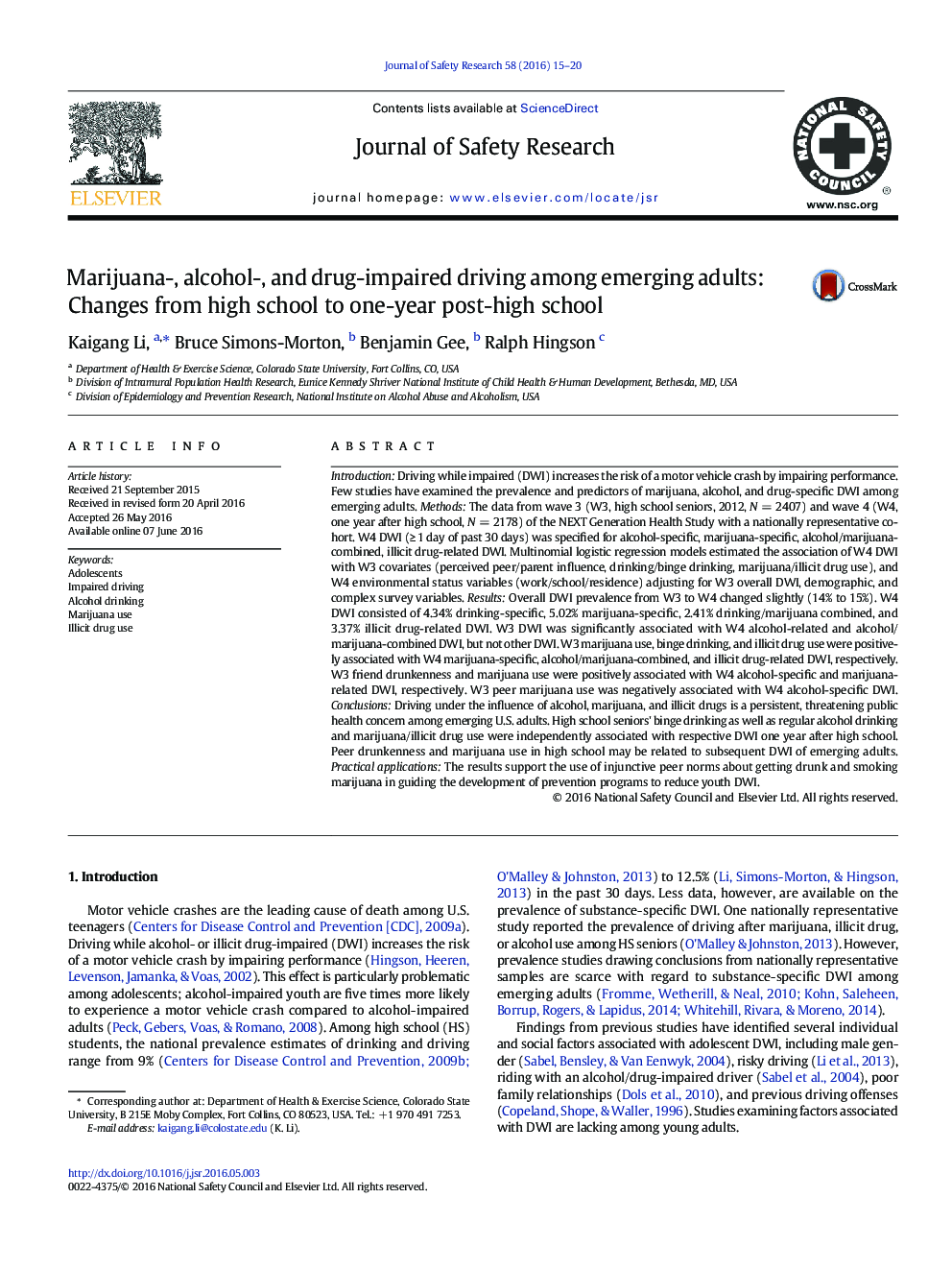| Article ID | Journal | Published Year | Pages | File Type |
|---|---|---|---|---|
| 587257 | Journal of Safety Research | 2016 | 6 Pages |
•The nationally representative prevalence of overall and substance-specific driving while impaired (DWI) was reported.•High school seniors' drinking and marijuana/illicit drug use were independently associated with respective DWI one year after high school.•Peer drunkenness and marijuana use in high school may be related to subsequent DWI of emerging adults.
IntroductionDriving while impaired (DWI) increases the risk of a motor vehicle crash by impairing performance. Few studies have examined the prevalence and predictors of marijuana, alcohol, and drug-specific DWI among emerging adults.MethodsThe data from wave 3 (W3, high school seniors, 2012, N = 2407) and wave 4 (W4, one year after high school, N = 2178) of the NEXT Generation Health Study with a nationally representative cohort. W4 DWI (≥ 1 day of past 30 days) was specified for alcohol-specific, marijuana-specific, alcohol/marijuana-combined, illicit drug-related DWI. Multinomial logistic regression models estimated the association of W4 DWI with W3 covariates (perceived peer/parent influence, drinking/binge drinking, marijuana/illicit drug use), and W4 environmental status variables (work/school/residence) adjusting for W3 overall DWI, demographic, and complex survey variables.ResultsOverall DWI prevalence from W3 to W4 changed slightly (14% to 15%). W4 DWI consisted of 4.34% drinking-specific, 5.02% marijuana-specific, 2.41% drinking/marijuana combined, and 3.37% illicit drug-related DWI. W3 DWI was significantly associated with W4 alcohol-related and alcohol/marijuana-combined DWI, but not other DWI. W3 marijuana use, binge drinking, and illicit drug use were positively associated with W4 marijuana-specific, alcohol/marijuana-combined, and illicit drug-related DWI, respectively. W3 friend drunkenness and marijuana use were positively associated with W4 alcohol-specific and marijuana-related DWI, respectively. W3 peer marijuana use was negatively associated with W4 alcohol-specific DWI.ConclusionsDriving under the influence of alcohol, marijuana, and illicit drugs is a persistent, threatening public health concern among emerging U.S. adults. High school seniors' binge drinking as well as regular alcohol drinking and marijuana/illicit drug use were independently associated with respective DWI one year after high school. Peer drunkenness and marijuana use in high school may be related to subsequent DWI of emerging adults.Practical applicationsThe results support the use of injunctive peer norms about getting drunk and smoking marijuana in guiding the development of prevention programs to reduce youth DWI.
